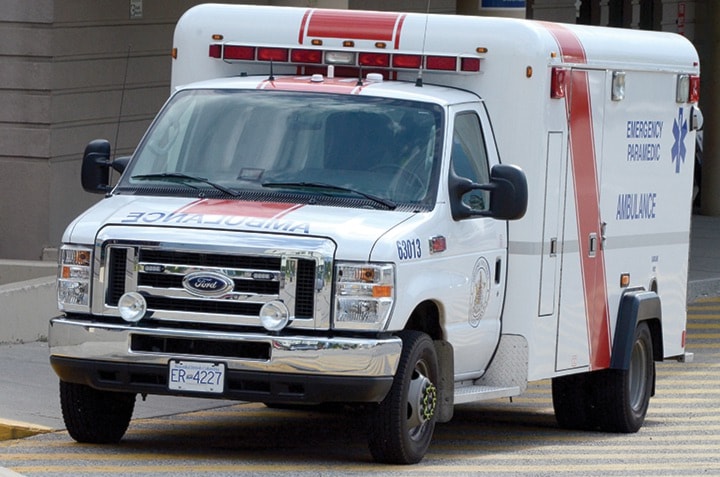Not only is Penticton a great place to soak up the sun and sample some wine, it’s also a good place to get hurt.
The city had B.C.’s third-fastest ambulance response times in 2012, according to data provided by a former air ambulance pilot who’s advocating for improvements to the pre-hospital care system.
B.C. Ambulance Service statistics show the average response time in Penticton to a Code 3 call, for which lights and sirens are activated, was eight minutes and 12 seconds.
“Penticton is one of the few municipalities in all of B.C. that has reasonable ambulance access,” said Hans Dysarsz, who obtained the numbers through a freedom of information request.
It’s also one of just 10 communities in the province that enjoy a response time below the North American standard of 8:59 suggested by the U.S. Commission on Accreditation of Ambulance Services.
Around the South Okanagan and Similkameen, the longest waits last year were 22:31 in Naramata and 18:37 in Okanagan Falls.
Neither community has an ambulance station, so patients must wait on ambulances from elsewhere.
Oliver, Osoyoos and Summerland response times all fell within a minute of the 10-minute mark, while Keremeos lagged behind at 13:23.
All four communities have ambulance stations with one ambulance available at all times and another on call.
BCAS spokesperson Kelsie Carwithen said in a statement that the 8:59 standard only applies to urgent calls in metropolitan areas.
She also noted that in many places patients don’t have to wait for an ambulance to receive care, since some fire departments provide first responders.
The BCAS is “committed to improving all response times,” added Carwithen.
“Over the last three years, BCAS has maintained a consistent average response time for urgent calls in urban areas despite increased call volume.”
Penticton’s ambulance station has one unit ready around the clock, plus another on day shift and a third on call.
Carwithen said resource placement is dictated by call volume to, and location of, a particular station.
“In terms of response times, weather, terrain, road infrastructure, traffic and geography can all have an impact,” she added.
Dysarsz, however, thinks more minutes could be shaved off if the B.C. government allowed first responders to also transport patients to hospital, which is currently the sole purview of BCAS.
“The whole issue of pre-hospital care in B.C. is a bizarre and unexplainably weird situation,” he said.
He’s advocating for a European-style system where some countries employ doctors in ambulances and call out physicians who have clinics near an accident scene, which he said would reduce the time people wait for care and ultimately save lives.
“In Canada, the pre-hospital care system is completely standalone from our down-line health care system,” said Dysarsz.
It’s not one transparent system like they have in other countries where they realized this decades ago.”
The “scoop-and-run system” used in B.C. “might work for FedEx and UPS, but it doesn’t work when you’re dealing with people,” he said.
Dysarsz, who helped create Alberta’s STARS Air Ambulance service, said anyone who has had a love one die while awaiting an ambulance or en route to hospital should ask their family doctor if the victim’s condition was time-sensitive.
“If they’re told, ‘This was completely treatable,’ at that point those people should get pissed off and go to their MLA and say, ‘enough is enough,” said Dysarsz.
“We don’t need $380-million highways to Whistler.
“We don’t need roofs on sports stadiums like B.C. Place for $550 million.
“We need an ambulance service that saves our asses when we’re in trouble.”
